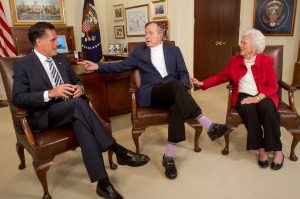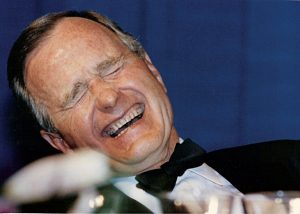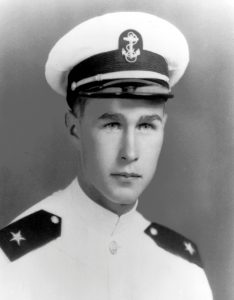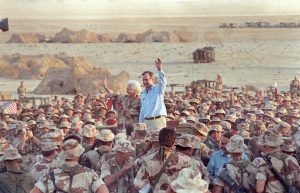
By Scot J. Paltrow
AMARILLO, Texas (Reuters) – In a sprawling plant near Amarillo, Texas, rows of workers perform by hand one of the most dangerous jobs in American industry. Contract workers at the U.S. Department of Energy’s Pantex facility gingerly remove the plutonium cores from retired nuclear warheads.
Although many safety rules are in place, a slip of the hand could mean disaster.
In Energy Department facilities around the country, there are 54 metric tons of surplus plutonium. Pantex, the plant near Amarillo, holds so much plutonium that it has exceeded the 20,000 cores, called “pits,” regulations allow it to hold in its temporary storage facility. There are enough cores there to cause thousands of megatons of nuclear explosions. More are added each day.
The delicate, potentially deadly dismantling of nuclear warheads at Pantex, while little noticed, has grown increasingly urgent to keep the United States from exceeding a limit of 1,550 warheads permitted under a 2010 treaty with Russia. The United States wants to dismantle older warheads so that it can substitute some of them with newer, more lethal weapons. Russia, too, is building new, dangerous weapons.
The United States has a vast amount of deadly plutonium, which terrorists would love to get their hands on. Under another agreement, Washington and Moscow each are required to render unusable for weapons 34 metric tons of plutonium. The purpose is twofold: keep the material out of the hands of bad guys, and eliminate the possibility of the two countries themselves using it again for weapons. An Energy Department website says the two countries combined have 68 metric tons designated for destruction – enough to make 17,000 nuclear weapons. But the United States has no permanent plan for what to do with its share.
Plutonium must be made permanently inaccessible because it has a radioactive half-life of 24,000 years.
“A MUCH MORE DANGEROUS SITUATION”
Edwin Lyman, a physicist at the Union of Concerned Scientists, a science advocacy group based in Washington, says solving the problem of plutonium storage is urgent. In an increasingly unstable world, with terrorism, heightened international tensions and non-nuclear countries coveting the bomb, he says, the risk is that this metal of mass annihilation will be used again. William Potter, director of the James Martin Center for Nonproliferation Studies at the Middlebury Institute of International Studies, told Reuters: “We are in a much more dangerous situation today than we were in the Cold War.”
Washington has not even begun to take the steps needed to acquire additional space for burying plutonium more than 2,000 feet below ground – the depth considered safe. Much of America’s plutonium currently is stored in a building at the Savannah River Site in South Carolina – like Pantex, an Energy Department site. Savannah River used to house a reactor. Local opponents of the storage, such as Tom Clements, director of SRS Watch, contend the facility was never built for holding plutonium and say there is a risk of leakage and accidents in which large amounts of radioactivity are released.
The Energy Department has a small experimental storage site underground in New Mexico. The department controls the radioactive materials – plutonium, uranium and tritium – used in America’s nuclear weapons and in the reactors of nuclear-powered aircraft carriers and submarines. In a Senate hearing in June 2017, Energy Secretary Rick Perry said the Energy Department has been in talks with New Mexico officials to enlarge the site. Environmental groups there have strongly opposed expansion.
Under an agreement with Russia, the United States was to convert 34 metric tons of plutonium into fuel for civilian reactors that generate electricity. The fuel is known as MOX, for “mixed oxide fuel.” Plutonium and uranium are converted into chemical compounds called oxides, and mixed together in fuel rods for civilian nuclear power plants. The two metals are converted into oxides because these can’t cause nuclear explosions. But the U.S. effort has run into severe delays and cost overruns.
The alternative method is known as dilute-and-dispose. It involves blending plutonium with an inert material and storing it in casks. The casks, however, are projected to last only 50 years before beginning to leak, and so would need to be buried permanently deep underground.
THE MOX MESS
President Donald Trump has sided with the Energy Department in wanting to kill the MOX project because of the extreme cost overruns and delays. The Energy Department, beginning in the Obama administration, favored closing down the MOX project for the same reason, but Congress overruled it. The federal budget adopted in February, however, specifies a means for ending the project, if a study shows that dilute-and-dispose would be at least 50 percent cheaper than making MOX.
The National Nuclear Security Administration, the part of the Energy Department that oversees the nuclear sites and materials, favors switching to the dilute-and-dispose method. In recent testimony before a House of Representatives subcommittee, Lisa Gordon-Hagerty, the new NNSA administrator, said that method would “cost billions less” than completing the MOX plant.
Plutonium is a versatile nuclear bomb material. Terrorists would need only 11 kilograms or less to make a bomb, Lyman says.
Its ordinarily limited radioactivity makes plutonium safe for terrorists or other thieves to transport with little risk of radiation injury. It goes undetected by most sensors. It radiates alpha particles, relatively large on an atomic scale, which means the thin glass of a test tube, the leather of a briefcase, or even air or skin stop them. The danger from handling small amounts is inhaling plutonium dust. In that case, the dust spreads from the lungs throughout the body, causing multiple kinds of cancer.
The federal government now has no solution in sight to dispose of the plutonium permanently. Its one effort to make it unusable for bombs has turned into what the White House and Energy Department say is a costly failure. The MOX project, at the Energy Department’s Savannah River Site in South Carolina, has been kept on life support by Congress thanks to the influence of South Carolina Senator Lindsey Graham and other lawmakers. The MOX plant employs about 2,000 people in Graham’s state.
Graham and other Congressional backers say MOX is the best way to keep plutonium out of the hands of terrorists. They note too that the pact with Russia requires the United States to use MOX as the method for disposal.
A spokeswoman for Graham declined to comment on his behalf but sent a link to a YouTube video of a Senate hearing in March. In the hearing, Graham, referring to steps already taken to limit work on the MOX plant, said: “What I think we’ve done is ended the biggest non-proliferation program in the world, and I’m going to try and fix that.”
Today’s plutonium glut mainly is a legacy of the Cold War. The quantities now seem surreal. By 1967 the U.S. nuclear arsenal reached its apex, with 37,000 warheads. The Soviet Union’s peak came in the 1970s, with approximately 45,000. These were enough to destroy life on Earth thousands of times over.
A RADIOACTIVE PEACE DIVIDEND
Amid the terror and aggressiveness then of government and military leaders on both sides, little or no thought was given what to do with the warheads should the risk of mass annihilation ebb.
Daniel Ellsberg, best known for leaking in 1971 the Pentagon Papers about the Vietnam war, in the early 1960s was an adviser to the Air Force and White House on nuclear policy. He recently published a book detailing and criticizing the nuclear policy debates and decisions of that era. In a phone interview, he said disposal of weapons was never considered at the time.
“I don’t think one person gave one moment of thought to that,” Ellsberg said. “No one thought that the Cold War would end.”
Treaties that dramatically reduced U.S. and Russian nuclear arsenals were signed soon after the Soviet Union fell. It was then that the magnitude of the problem – disposing of the surplus plutonium – dawned on the two countries.
Scientists proffered ideas, nearly all involving making the plutonium forbiddingly dangerous for malefactors to transport and burying it deep underground.
Instead, under a 2000 treaty, the United States agreed to transform the 34 metric tons of plutonium into MOX, unusable for bombs. Russia agreed to destroy the same quantity using a special type of reactor. But the United States had never before built a MOX plant. No U.S. civilian reactor had ever used MOX as fuel.
This misplaced optimism led to one of the costliest snafus ever in U.S. government construction. Work began in 2007 to build a MOX plant that was to be operational by November 2016. The Energy Department now estimates that, if allowed to proceed, it will not be finished until 2048. In 2007 the Energy Department said the total cost would be $4.8 billion. Now it estimates the cost at more than $17 billion.
Building of the plant began when detailed designs were between 20 percent and 40 percent complete. But once initial construction finished, the contractor, under instructions from the Energy Department, breezed ahead without architectural plans.
Reports from the Union of Concerned Scientists said rooms were built for laboratories and offices where none were needed. Ventilation ducts and electrical wiring were in the wrong places. Plumbing was a maze of misplaced pipes. The contractor later had to rip out much of its work and start over.
The contractor is a consortium of companies I Areva MOX Services. It includes CB&I (formerly Chicago Bridge and Iron), based in the Netherlands, and Areva, which specializes in nuclear-related and alternative power projects, majority owned by the French government.
GIVING IT AWAY
In an e-mailed statement to Reuters, the consortium said it expects to finish the facility. It said “the project is over 70 percent physically complete.”
But Gordon-Hagerty, the National Nuclear Security Administration’s new chief, testified in March before a House Appropriations Subcommittee that it is “nowhere near” 50% complete. Government Accountability Office reports criticized the Energy Department for awarding a “cost plus” contract, which guarantees a profit regardless of how much work is done.
In an emailed response to questions for this article, Lindsey Geisler, a spokesperson for the NNSA, said that in 2011, after the contract had been awarded, “NNSA recognized the need to institute project management reforms.” She said the NNSA established a new office to better oversee contracting and acquisition, and that practices have improved significantly.
Echoing other critics, Frank von Hippel, a Princeton University professor who researches nuclear arms control and policymaking, said weak oversight continues. “The problem at DOE is that the quality of managers, with some exceptions, is quite low,” he said. “Contractors just milk them for money.”
An Energy Department panel reported in 2016 that there is no US market for MOX. To use MOX fuel rods, civilian power plants would have to modify their reactors, requiring lengthy relicensing by the Nuclear Regulatory Commission. The report said the best the Energy Department could hope for was to give the stuff away.
(Edited by Michael Williams)













